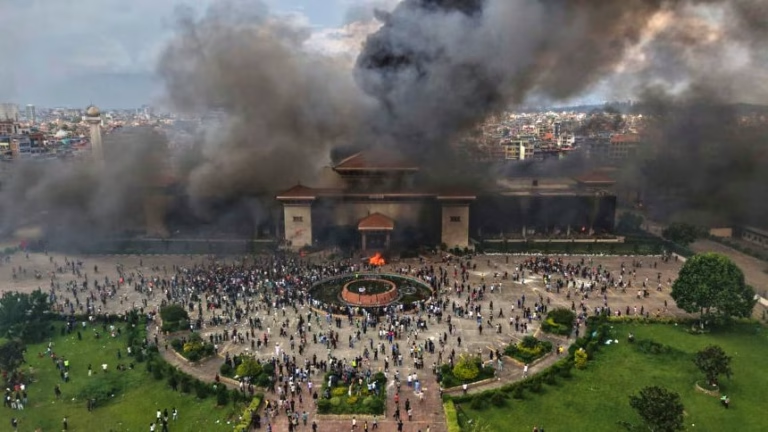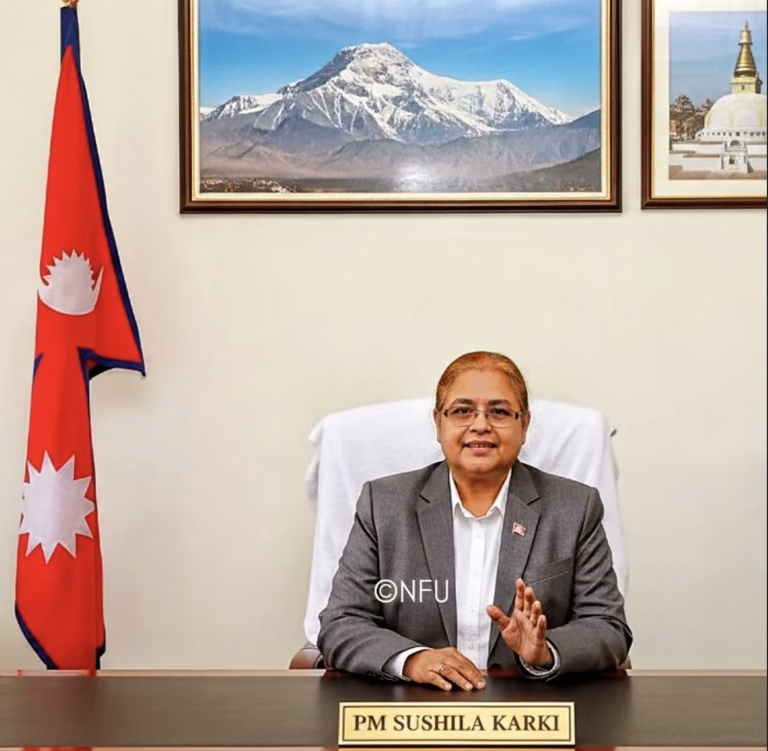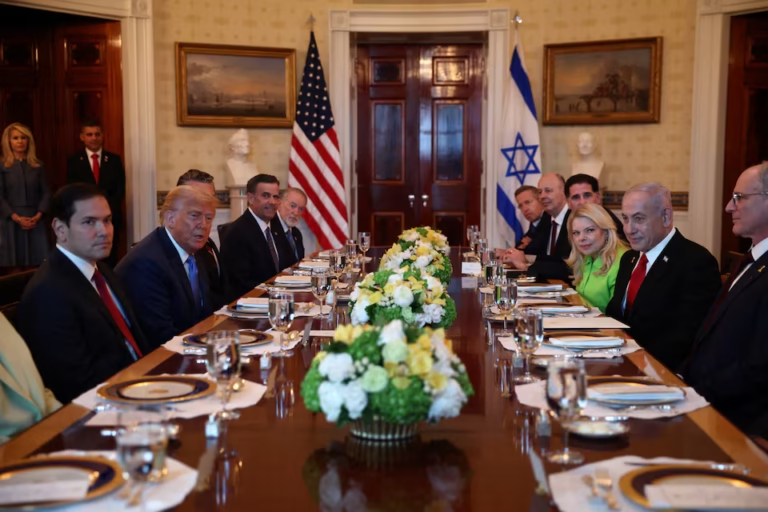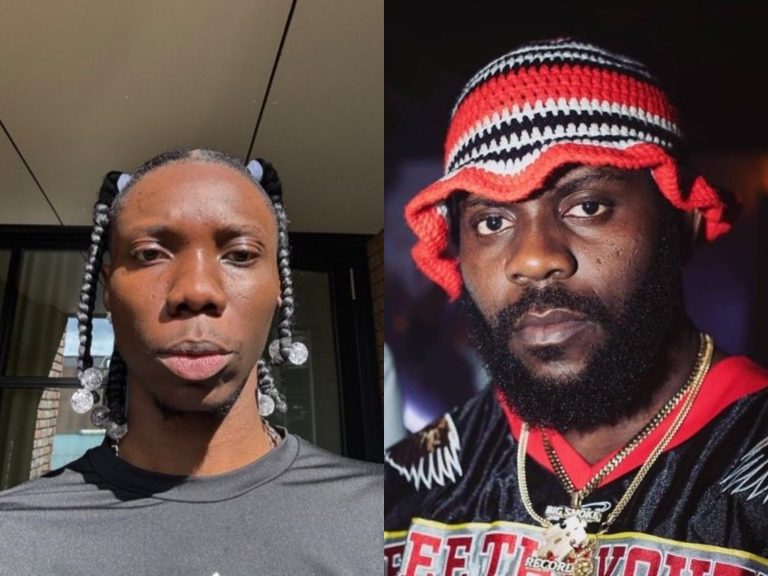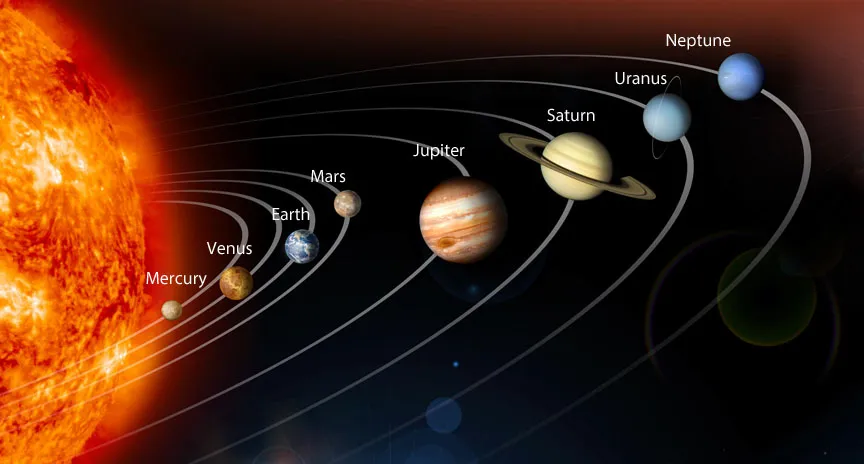
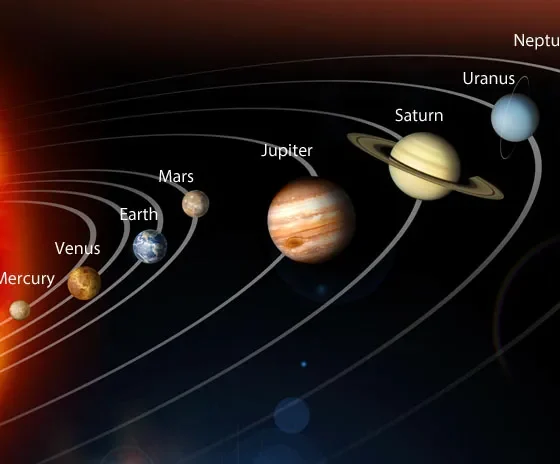
World News
Planetary Parade: Seven planets to align this Friday, See Why and How to See Them
Friday, February 28, 2025, offers a rare look at 7 of the 8 planets in our solar system. It’s called a Planetary Parade and they will be visible just after dusk.
Stargazers may be able to see six planets for much of this week, but on Friday, Mercury will join the lineup with Venus, Mars, Jupiter, Saturn, Uranus and Neptune. (You’ll need a pretty powerful telescope to see Neptune and Uranus. Saturn will be closest to the sun so it may also be hard to spot.)
Since each planet has its own orbit, alignment happens when they catch up to each other. This unique occurrence won’t last long since the planets move at different speeds.
The alignment will be most visible just after dusk, which happens in Savannah around 6:19 p.m. on the 28th. Weather permitting, the planetary parade should be visible from almost anywhere in North America. The next time the planets will align is August 29, 2025 (when Mercury, Venus, Jupiter, Saturn, Uranus and Neptune will be visible.)
What does it mean when planets align?
A planetary parade refers to how planets form a “straight line” and look as though they are marching across the night sky. It’s not a technical astronomy term, according to NASA, although the space agency has been known to use the phrase.
Whenever multiple planets become visible to the naked eye, it is often referred to as a planetary alignment.
The term may appear confusing, since the planets cannot actually fully line up in the three-dimensional solar system exactly as they may be seen in pictures; rather, it’s our perspective of the planets lining up from Earth. And while the planets appearing to align isn’t particularly special, seeing four or five bright planets at once doesn’t happen every year, the space agency said.
Is a planetary parade rare?
On any given night, weather permitting, you can spot at least one bright planet in the sky, and lineups of four or five planets, seen by the naked eye, typically occur every few years, according to Feb. 5 article by NASA’s Preston Dyches.
While Mars, Jupiter and Saturn are frequently spotted at night, the addition of Venus and Mercury make these four- and five-planetary alignments “particularly noteworthy,” Dyches said. That is because both Venus and Mercury orbit closer to the sun than Earth, meaning they orbit much quicker than other planets, according to NASA.
When was the last time 6 planets aligned?
The last time a planetary alignment, or “planet parade,” occurred was in January, when four bright planets and two faint planets were visible in the night sky. Venus, Saturn, Jupiter, Mars, Uranus and Neptune were visible in some areas during the month. Uranus and Neptune proved more difficult to spot and required a telescope to see. The phenomenon also took place in June 2024.
When are planets going to align in February?
Four planets — Venus, Mars, Jupiter and Saturn — have remained visible in the night sky in February, although you have to act fast if you want to see Saturn, which is slowly sinking lower in the sky after sunset as the month progresses.
Uranus and Neptune, which orbit in the dim, cold depths of the outer solar system, are hard to spot, but are there. Neptune “absolutely” requires a telescope to see, according to NASA, while Uranus is technically bright enough to detect if you have good eyesight, it’s faint and requires some knowledge of where to look in the sky.
The seven-planet alignment will happen on Friday, Feb. 28.
When will seven planets be visible in 2025?
Seven planets align Friday when Mercury joins Mars, Jupiter, Uranus, Neptune, Venus and Saturn, according to BBC Sky at Night Magazine.
It’s important to note that while talk of seven-planet alignments have created a lot of social media chatter, simply looking up in the night sky and seeing a vibrant alignment of seven plants in a magnificent arc is, well, unrealistic.
Mars, Jupiter and Saturn are frequently in the night sky. Venus and Mercury, due to their smaller, faster orbits, make them a rarity to spot in the night sky, but they’ll be there too, according to NASA.
Making it even more rare is the addition of Uranus and Neptune — thus a seven-planet parade — but very few will see them. Both are very difficult to spot without the proper equipment and resources to find their exact location in the sky. Having a cloud-free sky and viewing the sky before dawn or after sunset are also key.
How can I get the best view of the planets?
Steer clear of city lights and head to an open area or hill. If the skies are clear, most of the planets will be visible to the naked eye.
Astronomers recommend a telescope with at least an 8-inch aperture at 50 times magnification to see Uranus and its rings, and 150 times magnification to see Neptune. Saturn and its glorious rings can be spotted at 25 times magnification, astronomers say.
It’s also a good idea to download a stargazer app to help you navigate the night sky.
World News
Nepal Gen Z Revolution: How Discord Polls and TikTok Protests Overthrew a Government in 48 Hours
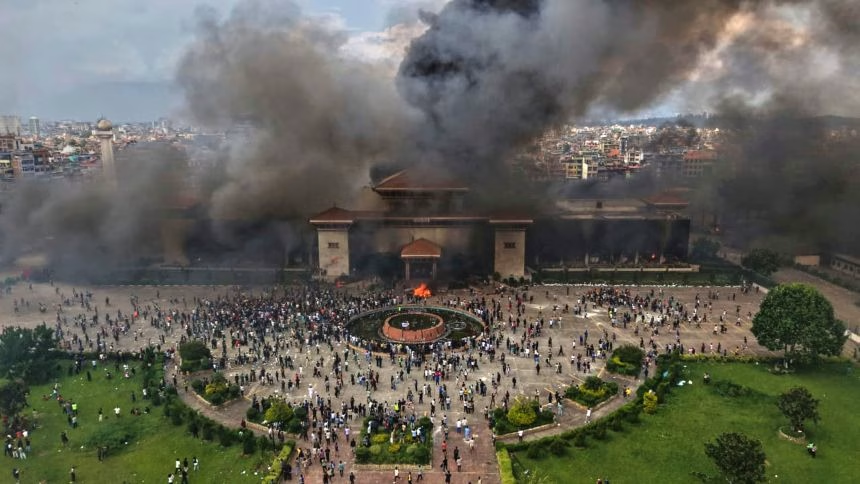
Nepali government was overthrown in 48 hours and I think i just witnessed the first internet native revolution a social media user from Nepal Wrote…
In what may be the world’s first internet-native revolution, the Nepali government collapsed in less than 48 hours after TikTok protests and decentralized organizing on Discord and Reddit spiraled into mass demonstrations, street violence, and ultimately the resignation of Prime Minister K.P. Sharma Oli. The uprising, dubbed the Nepal Gen Z revolution, has already reshaped political discourse in South Asia and beyond.
From the Fall of the Monarchy to Digital Disillusionment
Over two decades ago, Nepalis toppled the monarchy, ushering in multiparty democracy with hopes of a brighter, more equitable future. Yet, the same leaders who once claimed to fight for the people ended up living in lavish mansions, while ordinary citizens struggled to afford daily meals.
By the late 2010s, however, everything began to change. Widespread internet access exposed government scandals in real time. Citizens could see how much faster other developing nations were advancing, and frustration mounted. The digital public sphere became the real opposition party.
The “Nepo Babies” TikTok Movement
In August 2025, the tipping point came. Nepali youth launched a viral TikTok trend called “Nepo Babies”, contrasting the glamorous lifestyles of politicians’ children with ordinary Nepalis who couldn’t afford a proper restaurant meal. Instagram and TikTok lit up with reels, memes, and exposés.
The backlash was immediate and vicious: elite children were cyberbullied nationwide, becoming living symbols of inequality.
The Social Media Ban That Sparked a Firestorm
On September 4, 2025, the Nepali government abruptly banned TikTok, Instagram, Discord, and Reddit, demanding that platforms register in Nepal and submit to government censorship.
But the move backfired. More than 20% of Nepalis live abroad, and the ban cut off communication between them and their families back home. Coupled with the growing anger around “Nepo Babies,” the timing was seen as both authoritarian and deeply out of touch.
September 8: Peaceful Protest Turns Deadly
By September 8, calls for protest had spread across every platform still accessible. Over 12,000 demonstrators gathered in Kathmandu for what began as a peaceful rally.
But by afternoon, police opened fire. More than 20 protesters were killed and 300 injured, their final moments livestreamed and shared across banned networks via VPNs. The grisly images ignited nationwide rage.
September 9: Burn Their Mansions
The very next day, protests escalated beyond imagination. Fueled by anger and coordinated through Discord and Reddit, demonstrators launched real-time “mimetic actions” across Nepal.
The day’s rallying cry “burn their mansions” spread like wildfire online. Politicians’ homes were set ablaze. Ministers were dragged into the streets, beaten, even humiliated by mobs. Police forces, demoralized and outnumbered, largely stood down.
By nightfall, Prime Minister Oli resigned and sought army protection.
The World’s First Discord Vote for a Prime Minister
But with the old guard gone, one question remained: who would lead Nepal?
Unlike past uprisings, there was no central revolutionary figure. Instead, thousands of Nepali youths gathered on Discord and Reddit, debating and polling in real time. For hours, usernames argued, meme-posted, and finally voted on who could represent the revolution.
Their choice? Sushila Karki, former Chief Justice, respected for her incorruptibility. Within days, negotiations with the army and president confirmed her as Nepal’s first female prime minister the first leader in history effectively chosen by a Discord poll.
A Glimpse Into the Network State Era
The Nepal Gen Z revolution marks more than just a political transition. It may be the first time a national government was toppled and replaced through internet-native coordination.
As one protester put it on Discord:
“The protest happened on the internet for years. The government just didn’t listen.”
The implications stretch far beyond Kathmandu. The experiment in digital democracy has shown young people worldwide what’s possible: that governments can fall, and leaders can rise, based on the viral will of the networked crowd.
Nepal, officially the Federal Democratic Republic of Nepal, is a landlocked country in South Asia.
It is mainly situated in the Himalayas, but also includes parts of the Indo-Gangetic Plain. It borders the Tibet Autonomous Region of China to the north, and India to the south, east, and west, while it is narrowly separated from Bangladesh by the Siliguri Corridor, and from Bhutan by the Indian state of Sikkim.
Nepal has a diverse geography, including fertile plains, subalpine forested hills, and eight of the world’s ten highest mountains, including Mount Everest, the highest point above mean sea level on Earth.
Kathmandu is the nation’s capital and its largest city. Nepal is a multi-ethnic, multi-lingual, multi-religious, and multi-cultural state, with Nepali as the official language.
Grid
Follow BONA NAIJA for more
World News
Nepal’s Gen Z Digital Uprising Installs First Female Prime Minister
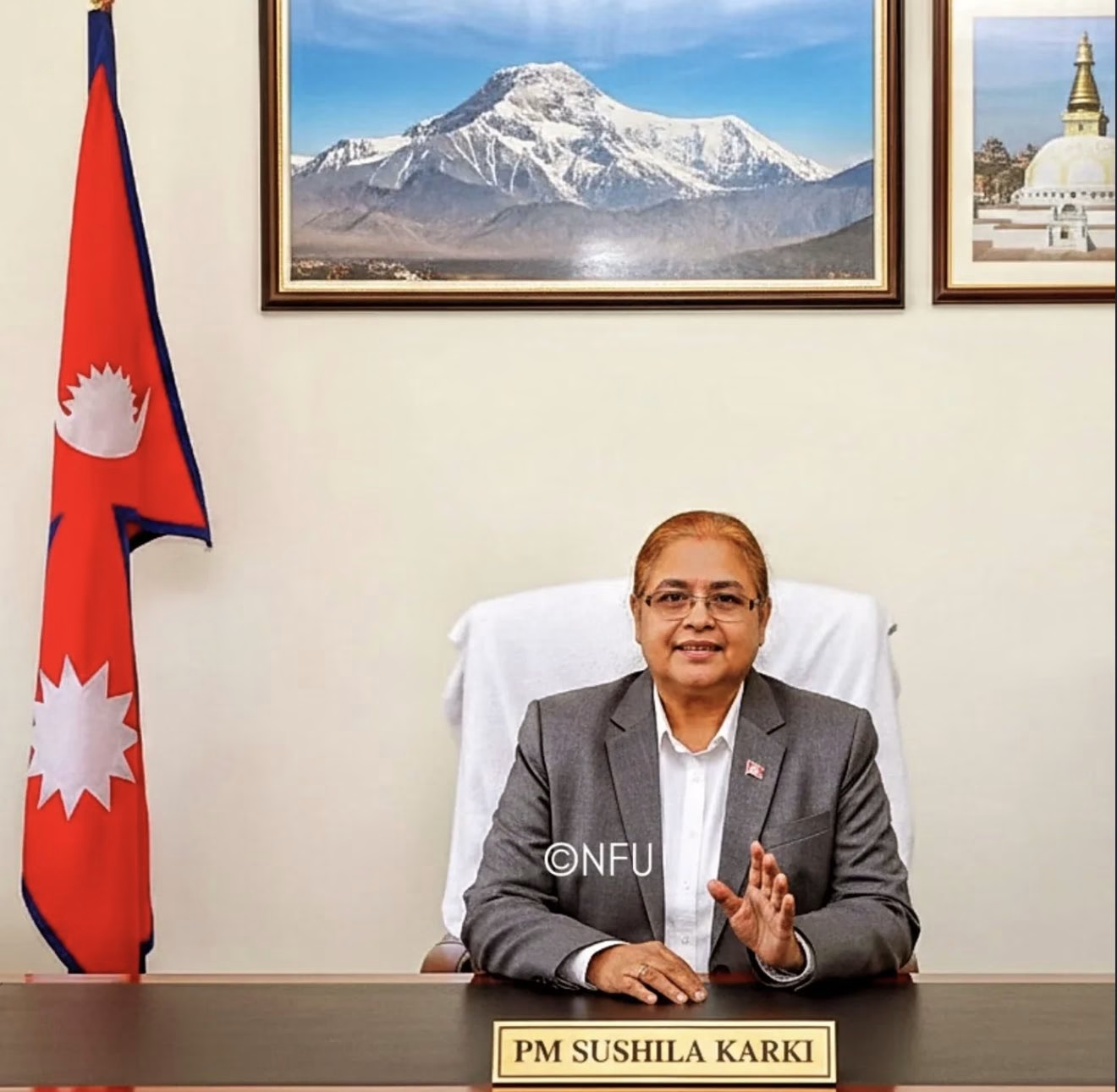
In a historic turn of events, Nepal’s Gen Z-led movement has reshaped the nation’s political landscape by leveraging online platforms to drive regime change. Frustrated by entrenched corruption and widening inequality, protesters mobilized both digitally and in the streets to oust former Prime Minister K.P. Sharma Oli.
On Friday, Sushila Karki, a former Chief Justice of Nepal’s Supreme Court, was sworn in as the country’s first female prime minister. Her appointment followed a groundbreaking leadership vote conducted on Discord, marking the world’s first transition of national power influenced directly by digital platforms.
The dramatic shift was not without cost: at least 51 people lost their lives during clashes between security forces and demonstrators. Yet, for many young Nepalis, the movement signals a new chapter in governance one blending grassroots activism, digital democracy, and generational defiance.
Regional powers including India and China are closely monitoring developments in Kathmandu, wary of potential instability in the Himalayan republic.
Analysts say Nepal’s experiment could inspire similar digital-driven uprisings elsewhere, challenging traditional systems of power.
Follow BONA NAIJA for more
Most Popular
Business
Elon Musk Reclaims Richest Person Title After Larry Ellison’s $100 Billion Wealth Surge

Elon Musk has reclaimed his position as the world’s richest person, after briefly being overtaken by Oracle co-founder Larry Ellison, whose fortune surged by a record-breaking $100 billion in a single day.
Ellison’s wealth jumped to $392.6 billion on Wednesday, propelled by Oracle’s stunning quarterly results and a wave of new multibillion-dollar AI cloud contracts. The surge momentarily placed him ahead of Musk, valued at around $385 billion at the time, according to the Bloomberg Billionaires Index.
But by the close of trading, Oracle’s share price dipped from its highs, allowing Musk to reclaim the top spot with an estimated net worth of $384 billion.
Oracle’s AI-Fueled Boom
The dramatic swing was driven by Oracle’s transformation into a major player in AI cloud infrastructure. The company reported:
12% revenue growth year-on-year, reaching $14.9 billion.
Cloud revenues up 27%, to $7.2 billion.
Cloud infrastructure revenue up 54%, to $3.3 billion.
Oracle also revealed contracts with OpenAI, Meta, Nvidia, AMD, and Musk’s own AI venture, xAI. Its pipeline of future business is unprecedented: Remaining Performance Obligations (RPO), or contracted revenue yet to be delivered, soared to $455 billion, up 359% from the previous year.
“Demand for Oracle’s AI cloud services is overwhelming,” said CEO Safra Catz, projecting that infrastructure revenues could hit $18 billion this fiscal year.
A Historic Wealth Surge
Ellison, who owns about 41% of Oracle (1.16 billion shares), saw his fortune balloon as the stock peaked at $345.68 per share.
The gain marked the largest single-day wealth increase ever recorded on Bloomberg’s index, surpassing Musk’s previous record of $63 billion in December 2024.
The spike also highlights Oracle’s remarkable pivot from traditional database software to a core provider of computing power for AI, with OpenAI alone contracting 4.5 gigawatts of data center capacity. Oracle’s close partnership with Nvidia, the leading supplier of AI GPUs, has further cemented its position.
Musk’s Grip on the Summit
Despite Ellison’s dramatic rise, Musk’s diversified empire helped him regain the crown quickly.
His wealth, still heavily tied to Tesla stock, has been pressured this year by weaker electric vehicle incentives and ongoing political controversies. Yet Musk also commands significant holdings in SpaceX, X (formerly Twitter), and xAI, giving him a broader cushion against market swings.
Musk has now held the title of world’s richest person for nearly four years, with only brief interruptions.
Market Volatility and Billionaire Rivalries
The back-and-forth underscores the volatility of modern billionaire wealth, where fortunes can rise or fall by tens of billions in a matter of hours. In the AI-driven era, stock valuations are increasingly tied to big cloud contracts, technological breakthroughs, and shifting market sentiment.
Oracle shares are up 45% year-to-date in 2025, far outpacing the broader market and even some of the “Magnificent Seven” tech giants. The company’s momentum signals that traditional software firms can reinvent themselves as critical AI infrastructure providers, challenging incumbents like Microsoft, Google, and Amazon.
Ellison’s Enduring Legacy
At 81 years old, Larry Ellison remains one of Silicon Valley’s most enduring figures. Since founding Oracle in 1977, he has turned the company into one of the world’s largest software and cloud infrastructure firms.
READ ALSO: Larry Ellison Overtakes Elon Musk as World’s Richest Person After $101B Wealth Surge
Beyond Oracle, Ellison has expanded into media, politics, and philanthropy — with his family leading the acquisition of Paramount Global and his continued influence in Republican circles.
His brief moment as the world’s richest person underscores not only his company’s resurgence but also the high-stakes race among tech titans to dominate AI infrastructure.
The Bigger Picture
Ellison’s one-day ascent and Musk’s quick recovery highlight the unpredictability of wealth rankings in the tech age, where AI and cloud computing have become the defining drivers of economic power.
As investors pour billions into AI infrastructure, the competition among the world’s wealthiest entrepreneurs is set to remain fast-moving, volatile, and closely tied to the future of artificial intelligence.
For now, Musk is back on top, but the contest is far from over.
Follow BONA NAIJA for more
Most Popular
World News
Norway Oil and Gas Exploration Round Attracts 20 Bidders, Including Equinor and TotalEnergies
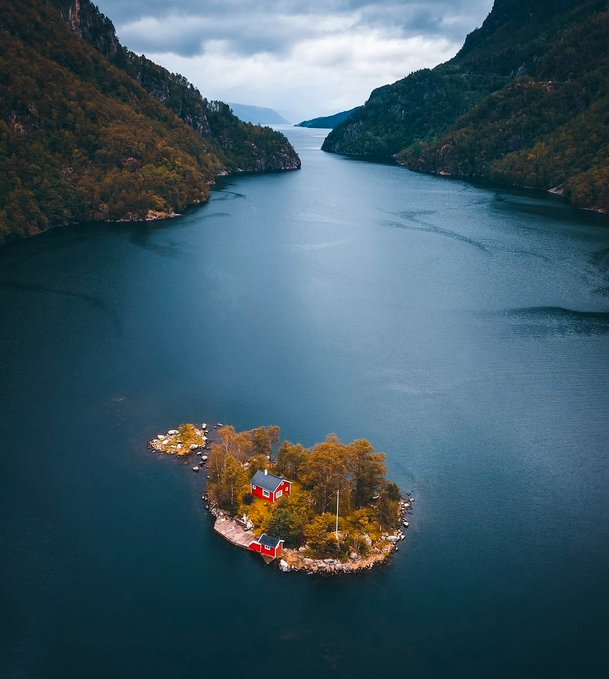
Norway’s Ministry of Energy announced on Thursday that it has received applications from 20 oil and gas companies for exploration acreage in its annual Awards in Predefined Areas (APA) licensing round.
The 2025 round features expanded acreage in the Arctic Barents Sea, part of Norway’s strategy to sustain long-term oil and gas production amid Europe’s shifting energy landscape.
According to the ministry, the number of applicants matches last year’s round, when exploration rights were awarded to 20 firms. Energy majors including Equinor, Aker BP, ConocoPhillips, and TotalEnergies were among those submitting bids.
READ ALSO: Dangote Refinery Makes History: Sends First Petrol Cargo to the U.S.
“It is gratifying to see that there is still great interest and that companies have faith in the opportunities that lie in further exploration,” Energy Minister Terje Aasland said in a statement.
“This will enable Norway to continue to be a stable and predictable supplier of oil and gas to Europe.”
The APA licensing round remains a cornerstone of Norway’s petroleum policy, ensuring access to new acreage in mature regions while balancing environmental concerns and economic interests.
Results from the latest bidding round are expected to be announced in early 2026.
Read more here
Follow BONA NAIJA for more
World News
Netanyahu meets Trump at White House as Israel, Hamas discuss ceasefire

U.S. President Donald Trump, hosting Israeli Prime Minister Benjamin Netanyahu at the White House on Monday, said the United States had scheduled talks with Iran and indicated progress on a controversial effort to relocate Palestinians out of Gaza.
According to REUTERS at the beginning of a dinner between U.S. and Israeli officials, Netanyahu said the United States and Israel were working with other countries who would give Palestinians a “better future,” suggesting that the residents of Gaza could move to neighboring nations.
“If people want to stay, they can stay, but if they want to leave, they should be able to leave,” Netanyahu said.
“We’re working with the United States very closely about finding countries that will seek to realize what they always say, that they wanted to give the Palestinians a better future. I think we’re getting close to finding several countries.”
Trump, who initially demurred to Netanyahu when asked about the relocating of Palestinians, said the countries around Israel were helping out. “We’ve had great cooperation from … surrounding countries, great cooperation from every single one of them. So something good will happen,” Trump said.
The president earlier this year floated relocating Palestinians and taking over the Gaza Strip to turn it into the “Riviera of the Middle East.” Gazans criticized the proposal and vowed never to leave their homes in the coastal enclave.
Human rights groups condemned the plan as ethnic cleansing.
Trump and Netanyahu met for several hours in Washington while Israeli officials continued indirect negotiations with Hamas aimed at securing a U.S.-brokered Gaza ceasefire and hostage-release deal.
Netanyahu returned to the Blair House guest house late on Monday, where he is due to meet Vice President JD Vance at 9:30 EDT on Tuesday.
Netanyahu’s visit follows Trump’s prediction, on the eve of their meeting, that such a deal could be reached this week. Before heading to Washington, the right-wing Israeli leader said his discussions with Trump could help advance negotiations under way in Qatar between Israel and the Palestinian militant group.
It was Trump’s third face-to-face encounter with Netanyahu since returning to office in January, and came just over two weeks after the president ordered the bombing of Iranian nuclear sites in support of Israeli air strikes. Trump then helped arrange a ceasefire in the 12-day Israel-Iran war.
Trump said his administration would be meeting with Iran. “We have scheduled Iran talks, and they … want to talk. They took a big drubbing,” he said.
Trump’s Middle East envoy Steve Witkoff said the meeting would take place in the next week or so.
Trump said he would like to lift sanctions on Iran at some point. “I would love to be able to, at the right time, take those sanctions off,” he said.
Iranian President Masoud Pezeshkian said in an interview released on Monday that he believed Iran could resolve its differences with the United States through dialogue.
Trump and his aides appeared to be trying to seize on any momentum created by the weakening of Iran, which backs Hamas, to push both sides for a breakthrough in the 21-month Gaza war.
The two leaders, with their top advisers, held a private dinner in the White House Blue Room, instead of more traditional talks in the Oval Office, where the president usually greets visiting dignitaries.
Outside, hundreds of protesters, many wearing Palestinian keffiyeh scarves and waving Palestinian flags, gathered near the White House, waving banners that read “Stop Arming Israel” and “Say No to Genocide”.
They also called for Netanyahu’s arrest, referring to the International Criminal Court’s arrest warrant against the Israeli leader over alleged war crimes in Gaza.
Netanyahu met earlier on Monday with Witkoff and Secretary of State Marco Rubio. He planned to visit the U.S. Capitol on Tuesday to see congressional leaders.
During their meeting, Netanyahu gave Trump a letter that he said he had used to nominate the U.S. president for the Nobel Peace Prize. Trump, appearing pleased by the gesture, thanked him.
Ahead of their visit, Netanyahu told reporters Israeli negotiators were driving for a deal on Gaza in Doha, Qatar’s capital.
Israeli officials also hope the outcome of the conflict with Iran will pave the way for normalization of relations with more of its neighbors such as Lebanon, Syria and Saudi Arabia.
SECOND DAY OF QATAR TALKS
Witkoff, who played a major role in crafting the 60-day ceasefire proposal at the center of the Qatar negotiations, will travel to Doha this week to join discussions there, White House press secretary Karoline Leavitt told reporters earlier on Monday.
In a sign of continued gaps between the two sides, Palestinian sources said Israel’s refusal to allow the free and safe entry of humanitarian aid into Gaza remains the main obstacle to progress in the indirect talks.
Israel insists it is taking steps to get food into Gaza but seeks to prevent militants from diverting supplies.
On the second day of negotiations, mediators hosted one round and talks were expected to resume in the evening, the Palestinian sources told Reuters.
The U.S.-backed proposal envisages a phased release of hostages, Israeli troop withdrawals from parts of Gaza and discussions on ending the war entirely.
Hamas has long demanded a final end to the war before it would free remaining hostages; Israel has insisted it would not agree to halt fighting until all hostages are released and Hamas dismantled.
Trump told reporters last week that he would be “very firm” with Netanyahu on the need for a speedy Gaza deal and that the Israeli leader also wanted to end the war.
Some of Netanyahu’s hardline coalition partners oppose halting military operations but, with Israelis having become increasingly weary of the Gaza war, his government is expected to back a ceasefire if he can secure acceptable terms.
A ceasefire at the start of this year collapsed in March, and talks to revive it have so far been fruitless. Meanwhile, Israel has intensified its military campaign in Gaza and sharply restricted food distribution.
Gazans were watching closely for any sign of a breakthrough. “I ask God almighty that the negotiating delegation or the mediators pressure with all their strength to solve this issue, because it has totally became unbearable,” said Abu Suleiman Qadoum, a displaced resident of Gaza city.
The Gaza war erupted when Hamas attacked southern Israel in October 2023, killing around 1,200 people and taking 251 hostages. Some 50 hostages remain in Gaza, with 20 believed to be alive.
Israel’s retaliatory war in Gaza has killed over 57,000 Palestinians, according to the enclave’s health ministry. Most of Gaza’s population has been displaced by the war and nearly half a million people are facing famine within months, according to United Nations estimates.
Trump has been strongly supportive of Netanyahu, even wading into domestic Israeli politics last month by criticizing prosecutors over a corruption trial against the Israeli leader on bribery, fraud and breach-of-trust charges that Netanyahu denies.
REUTERS
Follow BONA NAIJA for more
-

 Entertainment2 weeks ago
Entertainment2 weeks agoBig Brother Naija Live Update: KOLA, SULTANA Evicted #BBNaija
-

 Music3 weeks ago
Music3 weeks agoOdumodublvck Drops “Industry Machine” Feauturing Wizkid Ahead of 23-Track Album
-

 Entertainment2 weeks ago
Entertainment2 weeks agoImisi Crowned Winner of Big Brother Naija Season 10
-

 Biafra3 weeks ago
Biafra3 weeks agoJudgement Day: Tension in Abuja as Court Rules on Nnamdi Kanu’s No-Case Submission Today
-

 Music News2 weeks ago
Music News2 weeks agoOdumodublvck Set to Drop ‘Industry Machine’ The Album Featuring Davido, Wizkid, Skepta & Stormzy
-

 Music3 weeks ago
Music3 weeks agoSarz Drops Debut Album Featuring Wizkid, Asake, Skillibeng
-

 Music3 weeks ago
Music3 weeks agoSpyro Releases Debut Album The Men, The Boys & Your Guy
-

 News2 weeks ago
News2 weeks agoFirst Lady, Oluremi Tinubu Celebrates World Teachers’ Day 2025
-

 Music News3 weeks ago
Music News3 weeks agoNigerian singer Peruzzi to release new single “Die It” at midnight
-

 Entertainment3 weeks ago
Entertainment3 weeks agoVIDEO: AYRA STARR & REMA SHUT DOWN GLOBAL CITIZEN FESTIVAL 2025



